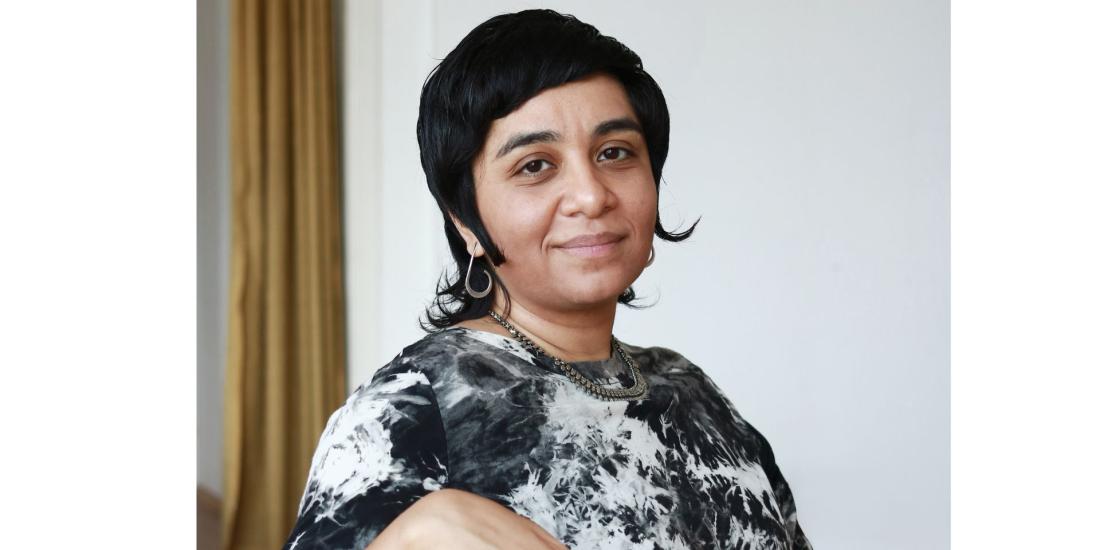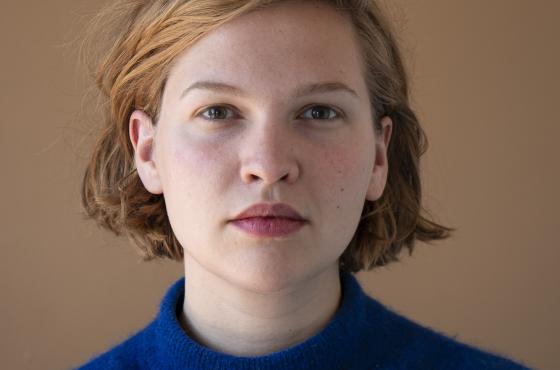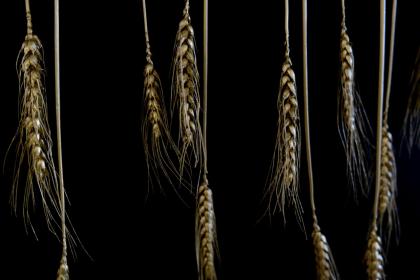Talking about Covid: in 2021, Monira Al Qadiri was already supposed to give a lecture-performance at Bozar, but due to the pandemic, it ended up taking place online. Moreover, the topic of that lecture was also the result of the pandemic. “When museums were allowed to reopen again after the first lockdown,” recalls the artist, “I rushed to the Egyptian Museum in Berlin. I just had to get out of the house! There, I was drawn to two hands – all that remained of a three-thousand-year-old statue of Nefertiti and Akhenaten.”
Al Qadiri was mesmerised by that seemingly eternal touch and she started digging up everything she could about the royal couple and ancient Egypt. At that very moment, the artist was asked by Bozar to give a lecture “on any subject,” the artist recalls, “so it was obvious that it had to be about that.” But even a millennia-old handshake of an Egyptian king and queen was no match for yet another lockdown, and Al Qadiri never made it to Bozar.
“Luckily, Bozar let me pick up the thread,” says the artist, “and that makes me intensely happy. Especially since I can now also incorporate my fascination with parallel universes. I often felt so lost during the pandemic that I started pondering parallel timelines and worlds.”
Quite specifically, the Kuwaiti artist is brooding on an ambitious exhibition consisting of four installations that explores the relationship between humans and animals ... through the lens of ancient Egypt. “I call it The Archeology of Beasts,” Al Qadiri enthuses. “Because who qualifies as human? Who qualifies as beast? And is one’s life worth more than the other? Certainly today, these are pertinent questions – at a time when we are well aware that we need to rethink our relationship with nature and abandon the idea that we can control it.”

Environmental Message
It is far from the first time Monira Al Qadiri has tackled ecological issues, “but I guess that’s because I come from a country that produces oil, which makes me feel responsible for the end of the world.” She laughs but seemingly means what she says. “Ecology is a broad field, though, and I have recently been very preoccupied with the relationship between humans and animals. Because that’s very different today than what it used to be. Nowadays, we live so segregated from each other that we are stunned when ‘wild’ animals suddenly appear in our streets and rivers during a pandemic. As if we had completely forgotten that these animals live in the same world. The difference with ancient Egypt, where animals were depicted as gods, could not be greater.”
The artist gives the example of Thoth, an Egyptian god with the head of a bird who decides whether or not someone goes to the afterlife. “He puts your heart on a scale with a feather, and if the heart weighs more than the feather, there is a small alligator that eats it. And that’s it! Your life is over, and you don’t go to heaven.’ Al Qadiri jumps up straight: ‘’Amazing, right! Today, we are barely in awe of lions or tigers, byt in ancient Egypt, our fate was decided by a bird!"
The artist gives the example of Thoth, an Egyptian god with the head of a bird who decides whether or not someone goes to the afterlife. “He put your heart on a scale with a feather, and if the heart weighs more than the feather, there is a small alligator that eats it. And that's it! Your life is over, and you don't get to go to heaven.” Al Qadiri jumps up straight: “Today, we are barely in awe of lions or tigers, but in ancient Egypt, our fate was decided by a bird!”
Naturally, the artist travelled to Egypt several times for the exhibition. On the one hand to do research – “it completely revitalised my idea of art because after five thousand years, that’s all that remains of this ancient civilisation” – and on the other hand to make 3D scans.
“This will be my most technology-heavy exhibition ever,” says Al Qadiri. “One of the four installations is a VR experience with which I want to create a parallel world – based on the rather agricultural idea the ancient Egyptians had of the afterlife. Although I have to admit that sometimes you don’t need VR glasses at all to feel like you’re in a parallel universe. Whenever I stepped into one of those five-thousand-year-old tombs in Egypt and saw things that were never meant to be seen by people, I already felt like I was walking around in an alternate reality.”
The exhibition The Archeology of Beasts runs from 14 November to 9 March. There will also be an artist talk with Monira Al Qadiri in the Terarken Hall on 13 November.


